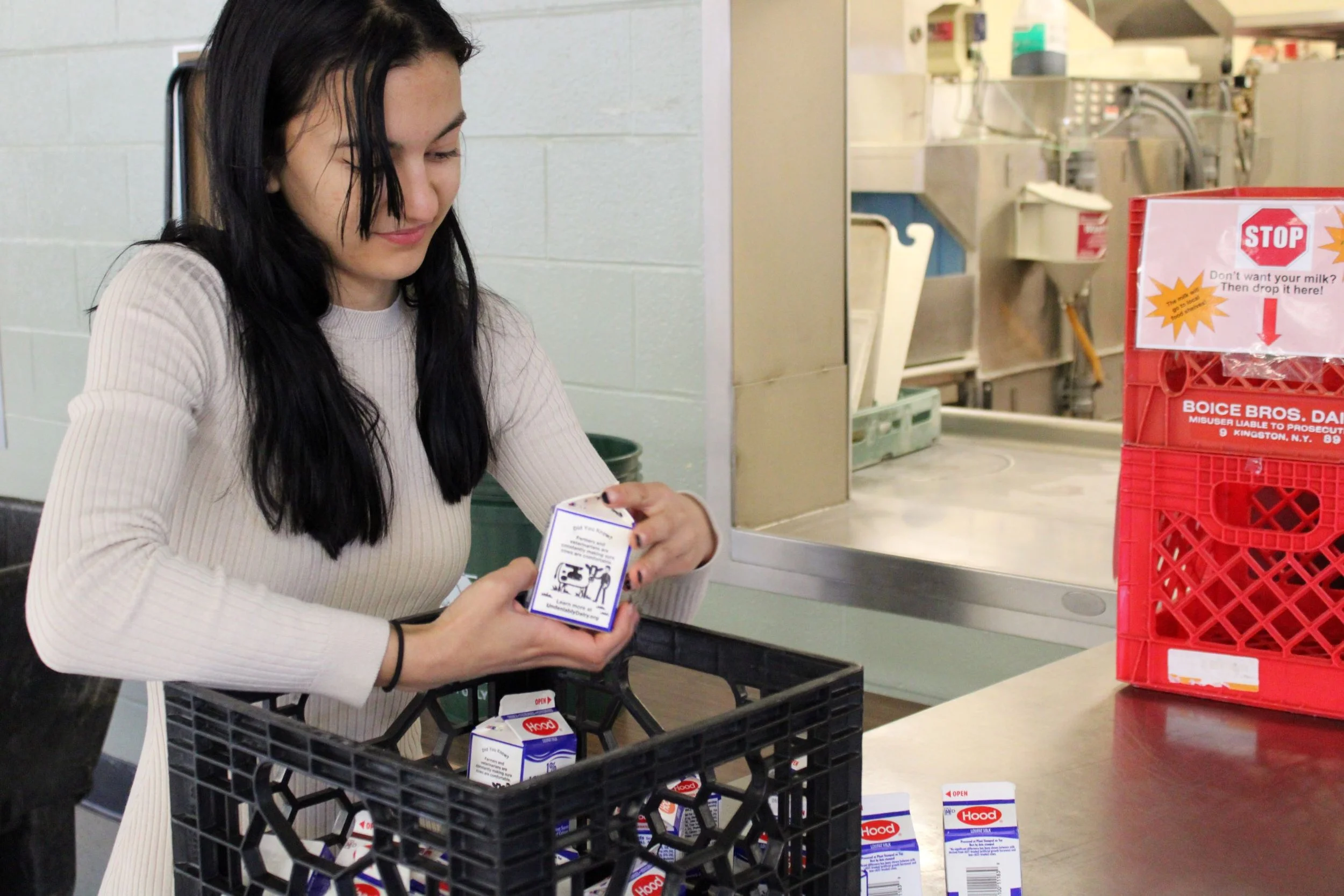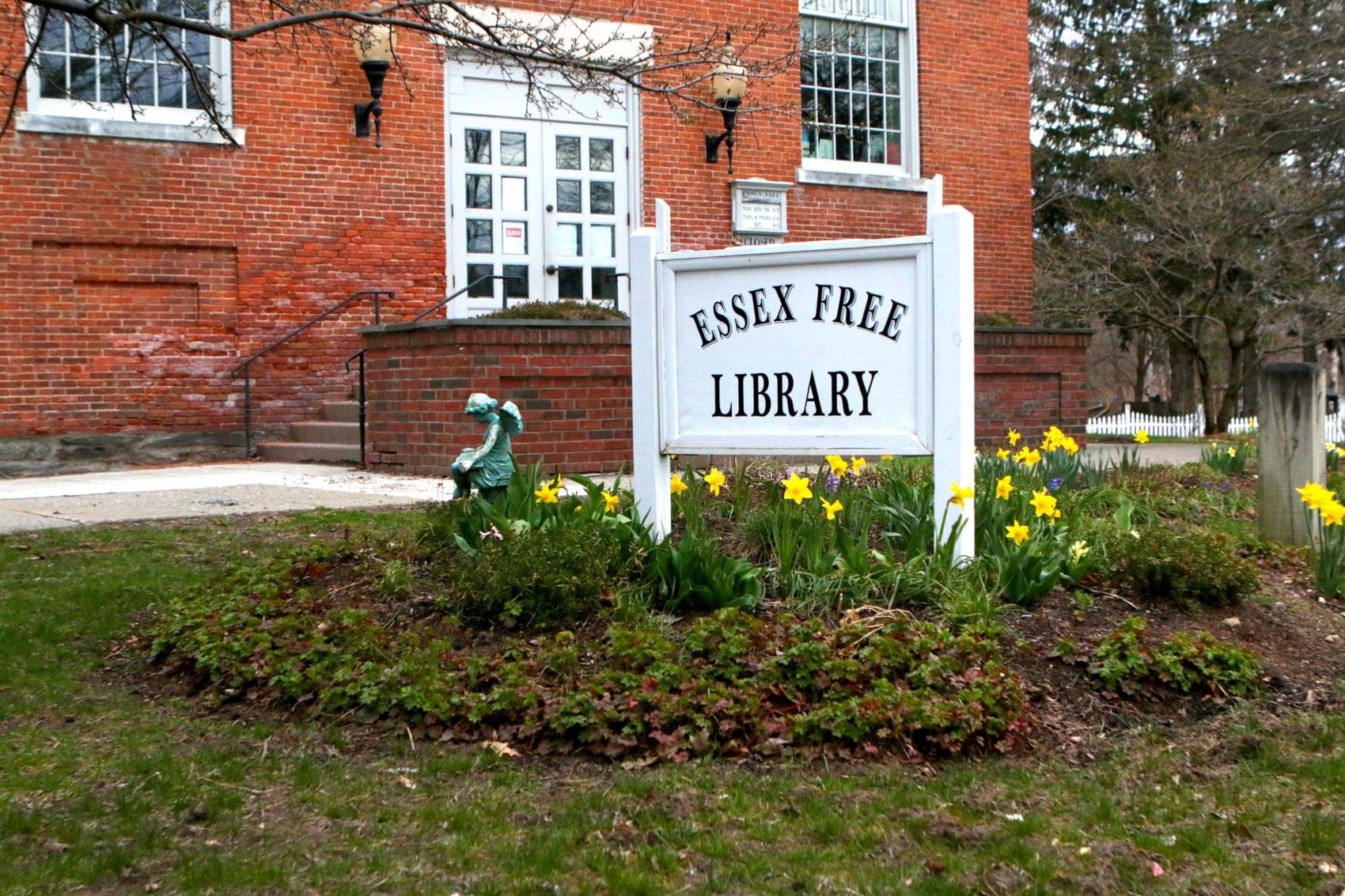Moooving milk to where it’s wanted
Student Miranda Rayfield from the Farm-to-School Club counts, sorts, and packs up milks destined for the food shelves or the farm. Photo by Sebastian Ruta
It was a problem just waiting to be solved and all it took was a few Harwood students asking “why?” to tackle it.
The problem? Leftover cartons of milk in Harwood Union High School’s cafeteria every day.
The solution: A project aptly named “Moooving Milk.”
Miranda Rayfield, a 17-year-old junior, is a leader of Harwood’s Farm-to-School club dedicated to encouraging sustainability. Rayfield explained that the club’s efforts started at the beginning of the school year when it resumed meeting in person.
Seeing the club back in action, one of the chefs in the Harwood kitchen, Stephanie Jenkerson, approached the student group about the excess milks.
“Not all students want milk,” Jenkerson said, “but they have to take it for a complete meal in order for it to ‘count’ as a reimbursable meal for the school.”
The rule is part of the complex regulations around school meals that are government funded. Since the COVID-19 pandemic began in 2020, school meals have been free to all students with federal funding available.
A “reimbursable meal” has to meet the nutrient content and portion size requirements of the National School Lunch and School Breakfast Program, allowing a school to receive benefits like funding and U.S. Department of Agriculture foods.
Still, Jenkerson said it was disheartening to see students putting their milks that came with their breakfasts or lunches straight into the trash.
Enter the Farm-to-School Club to tackle the problem.
At the morning breakfast station in the cafeteria, the team this school year has set up red milk crates designated for milk donations. While students are encouraged to drink their milk, cartons of unwanted milk can be set aside rather than thrown out.
Jenkerson said they collect about 50 milks a day this way.
The next step was finding a destination for the dozens of little 8-ounce cartons of milk.
Farm-to-School Club members looked to food shelves in the communities in the school district: the Waterbury Area Food Shelf, the Mad River Valley Community Pantry, and the Duxbury Elf Shelf to accept donations.
Paul Kramer, the faculty advisor for the Farm to School Club, says that the students worked closely with the kitchen staff and food service directors. “It always goes back to the magic of our food service staff in the kitchen - their ability to connect with the community and connect with students in the school,” he said.
As it’s turned out, since mid-February the club has figured that the effort has diverted 2,841 cartons of milk from the trash. Most have gone to the food shelves in Duxbury and Waterbury where staff report that patrons have been eager to take them home. Kramer said folks from the food shelves pick up on a regular schedule once weekly.
Waterbury Food Shelf Director Sara Whitehair said the milk donations have been valuable to her organization. Not only do shoppers enjoy the fresh milk, but the program also helps the food shelf save money as it can purchase less milk, she explained.
“We have fresh milk available for folks when they come in to get food, so it's been really helpful,” Whitehair said.
Ruth Haskins at the Duxbury Elf Food Shelf had similar sentiments. Without enough funding to always purchase milk, the donated cartons are appreciated. “If we get a crate, sometimes two crates, that's more than sufficient. It works very well,” Haskins said.
While the food shelves are a good way to get the excess school milks to people in the community, Rayfield noted that the club and school kitchen staff soon discovered another problem to tackle. They realized that some of the milk was either too close to the expiration date or at the expiration date to send to the food shelves. There wasn’t enough time to collect and then deliver them to the food shelves for shoppers to take them home and drink them before they spoil. So they needed a different option for a portion of the unwanted milk.
Gaylord Farm pigs enjoy leftover milk from the Harwood food program. Photo by Miranda Rayfield
Fortunately, expired milk isn’t a problem for everyone.
“Anything expired that couldn't go to food shelves could go to pigs at our local farms,” Rayfield said.
Living near Gaylord Farm in Waitsfield and knowing they had pigs, Rayfield contacted them about offering the expired milk. “We really don't have much waste (a.k.a. expired milk),” Kramer said. “But when we do, Miranda drops it off at Gaylord's. I’m not sure how it is distributed to the piggies.”
Rayfield said the milk is a welcome addition to the menu at the farm. “Gaylord was very happy to take our donations,” she said, “and the pigs seem happy!”
So what began as a source of concern and disappointment has turned into a successful effort to avoid wasting food. “It feels really good to know that people in the community are getting the unwanted milk,” Jenkerson said.
The Moooving Milk project, with all of its moving parts has benefitted multiple members of the community this school year.
“I'm totally thankful for seeing the milk not go to waste,” Rayfield said. “And I know a bunch of teachers, and even students, have also come to me and said how thankful they are for that as well.”
* * * * * * * * * * * * *
UVM student Abbie Kopelowitz this semester worked with the Community News Service, a collaboration with the University of Vermont’s Reporting and Documentary Storytelling program.
Sebastian Ruta is a senior exchange student from Poland this year. He is a photographer and writer for Harwood’s school newspaper, Common Ground.
Harwood junior Miranda Rayfield, a co-leader in the Farm-to-School Club, contributed photos at the Gaylord Farm.









